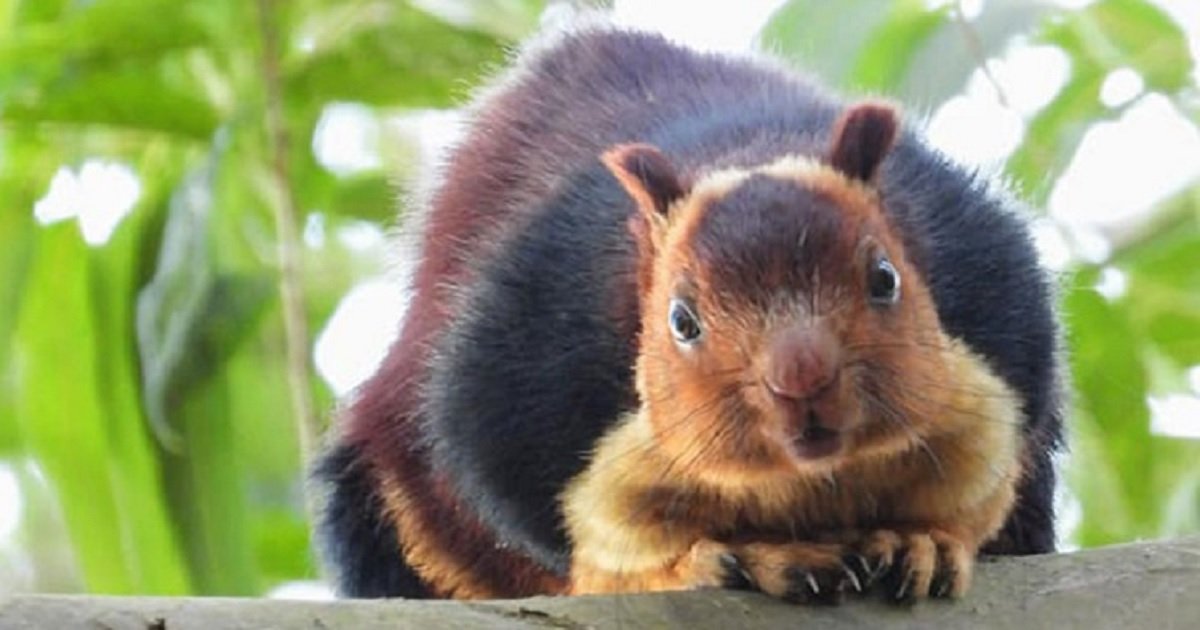When you mention the word “squirrel,” what typically comes to mind is the American gray squirrel or its cuter counterpart, the European red.
Either way, both are petite creatures that definitely max out the cute scale but would never stray into the magnificent or beautiful categories.
However, the Malabar giant squirrel, known in India as Shekru, is changing that perception as the creature becomes more known worldwide. This rodent is native to India and its incredibly dapper multi-colored coat is sure to impress anyone.
And as the name suggests, Malabars are huge, stretching as long as three feet. Of course, most of the length is taken up by its brilliantly blue bushy tail but it still won’t be mistaken for your typical squirrel.
But even with such a bright coat and large size, they are still difficult to find. With shades of black, brown, and orange, including maroon and purple, they are well-suited to blend seamlessly with the forest canopy. This natural camouflage also protects them from predators such as various birds of prey and even leopards.
The Malabar also isn’t picky about what it eats and will consume whatever is available in the treetops. With the help of their huge bushy tails to swing from tree to tree, they’ll eat flowers, bark, seeds, insects, and even bird eggs if the chance presents itself.
Although not much is known about the population of the Malabar giant squirrel, what is known is that their numbers appear to be declining. While not yet endangered, being hunted for their beautiful fur and humans encroaching on their natural habitats all jeopardize the Malabar’s existence. Sadly, they have already disappeared completely in some areas.
Amateur photographer Mohammed Farooq, who lives in the beautiful forest town of Kodaikanal in Tamil Nadu, South India, had a great surprise one morning when he came upon a Malabar giant squirrel during his daily walk.
“I came to Kodaikanal in 1982 as a young boy when this town was much less populated by humans and it was green all over,” he said. “I used to see these squirrels all over town, flying from tree to tree, but slowly their population has dwindled to extinction. But today, after nearly 34 years, I encountered one! It was a great surprise for me.”
He believes that the sudden influx of people moving into the popular tourist town in the 1990’s precipitated the decline of the Malabar giant squirrel in the area. But with the sudden comeback, it appears they may have finally adapted to living alongside humans.
“They are are not hunted here I believe,” Mohammed explained. “Lots of people in this area have learned to respect nature. I think there is a revival of the squirrel population here. They are coming back.”
The Rajiv Gandhi Zoological Park in Pune is also doing its part to help the magnificent animals make a comeback.
The cute critters are being bred in captivity and studied in the facility. “We wanted to study them genetically,” zoo director Rajkumar Jadhav told The Hindu. “There are plenty of studies on the tiger, but so little is known about smaller animals like this one.
”
They are also monitoring Malabar behavior to get an idea of how many times the animals mate, their gestation period, and their lifespan.
There is also some good news to be had from the wild as the Bhimashankar Wildlife Sanctuary is seeing a steady increase in the giant squirrel’s population. The sanctuary was specially designed for the protection of the Malabar giant squirrel. Between 2015 and 2016, a census found that their numbers increased by 8% in the sanctuary.
If finally looks like this beautiful animal is getting the protection and respect that it deserves in India. And hopefully, it will become as abundant as it once was in the near future.
Recommended Video!
“Raccoon Jumps Off 9th Floor Of Building And Lands Like Nothing Happened”





